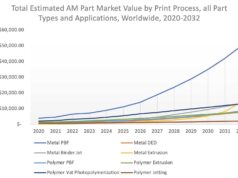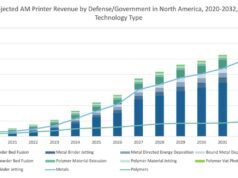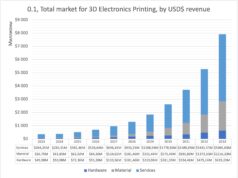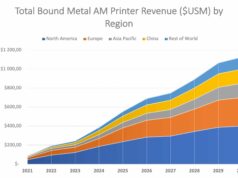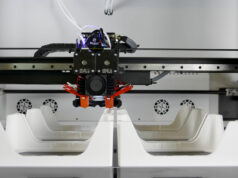Das Forschungsunternehmen Gartner Inc. veröffentlichte eine weitere interessante Prognose über Digital Industrial Revolution, 3D-Printing, Bioprinting, Digital Business und Internet of Things.
Im Zuge des Gartner Symposium/ITxpo am 10.Oktober, erstellte Gartner 10 Prognosen über Disruptive Technologies anhand einer Befragung von CEOs. Mit dabei natürlich auch 3D-Printing.
Digital Industrial Revolution
IT ist laut Gartner ein Beschleunigungsinstrument für die nächsten digitale industrielle Revolution. Als Beispiel wird hier 3D-Printing genannt.
Gartner, Inc. has revealed its top predictions for IT organizations and IT users for 2014 and beyond. Gartner’s top predictions for 2014 combine several disruptive topics — Digital Industrial Revolution, Digital Business, Smart Machines and the Internet of Things — that are set to have an impact well beyond just the IT function.
“Gartner’s 2013 CEO survey suggests CEOs feel that business uncertainties are declining and yet, CIOs awake each day into a world of technology uncertainty and change,” said Daryl Plummer, managing vice president and distinguished analyst at Gartner. “The savvy CIO will get his or her CEO to recognize the change being brought about by disruptive shifts is coming at an accelerated pace and at a global level of impact.”
Gartner analysts presented their findings during Gartner Symposium/ITxpo, being held here through October 10. Gartner’s top 10 predictions are broken out into four categories and include:
Digital Industrial Revolution — IT is no longer just about the IT function. Instead, IT has become the catalyst for the next phase of innovation in personal and competitive business ecosystems. One place where this is evident is in the beginnings of a Digital Industrial Revolution that threatens to reshape how physical goods are created using 3D printing.
So soll 3D-Druck bis 2018 wegen Verletzungen von geistigen Eigentum, einen Schaden von $100 Milliarden verursachen. Mindestens ein bedeutendes westliches Unternehmen wird seine geistigen Eigentumsrechte als verletzt ansehen. Unterstützt wird diese Erwartung von der Entwicklung neuer Technologien wie 3D-Scanning, 3D-Printing und 3D-Modelling.
By 2018, 3D printing will result in the loss of at least $100 billion per year in intellectual property globally. Near Term Flag: At least one major western manufacturer will claim to have had intellectual property (IP) stolen for a mainstream product by thieves using 3D printers who will likely reside in those same western markets rather than in Asia by 2015.
The plummeting costs of 3D printers, scanners and 3D modeling technology, combined with improving capabilities, makes the technology for IP theft more accessible to would-be criminals. Importantly, 3D printers do not have to produce a finished good in order to enable IP theft. The ability to make a wax mold from a scanned object, for instance, can enable the thief to produce large quantities of items that exactly replicate the original.
Bereits 2016, soll Tissue Engineering und 3D-Bioprinting eine internationale Diskussion bezüglich der Regulation der Technologie, bei menschlichen und nichtmenschlichen Anwendungen auslösen. Bis Ende 2015 werden Gesundheitsbehörden Leitfaden für den 3D-Druck von Organen und Gewebe entwickeln.
By 2016, 3D printing of tissues and organs (bioprinting) will cause a global debate about regulating the technology or banning it for both human and nonhuman use. Near Term Flag: The U.S. Food and Drug Administration or comparable agency in a developed nation that is charged with evaluating all medical proposals will introduce guidelines that prohibit the bioprinting of life-saving 3D printed organs and tissues without its prior approval by end of 2015.
Bioprinting is the medical application of 3D printers to produce living tissue and organs. The day when 3D bioprinted human organs are readily available is drawing closer. The emergence of 3D bioprinting facilities with the ability to print human organs can leave people wondering what the effect of it will be on society. Beyond these questions, however, there is the reality of what 3D bioprinting means in helping people who need organs that are otherwise not readily available.
via Gartner





